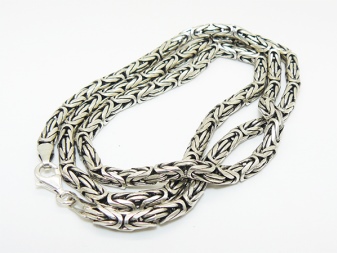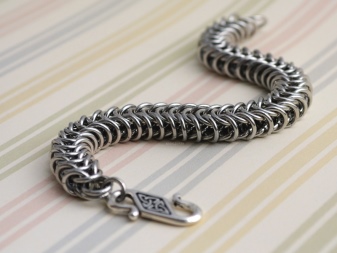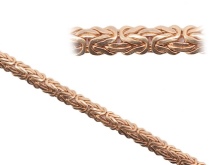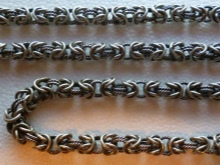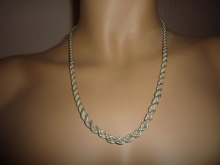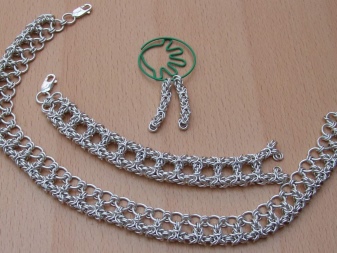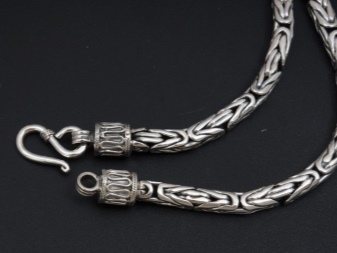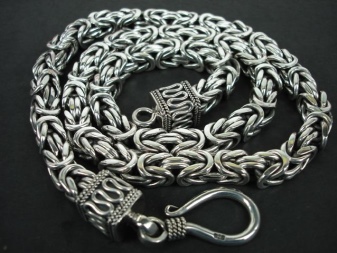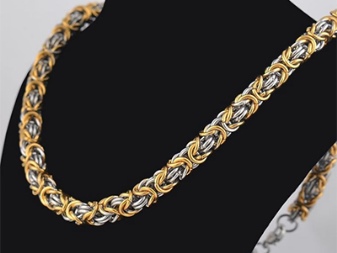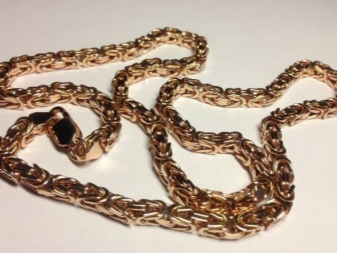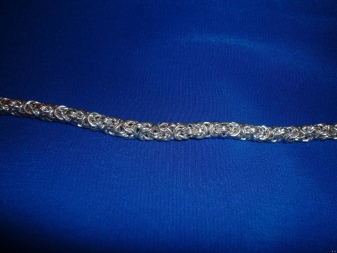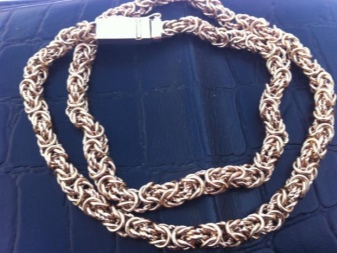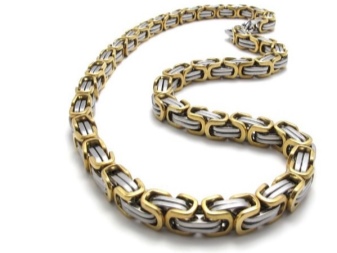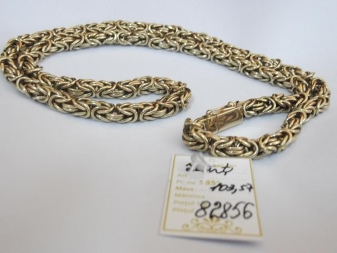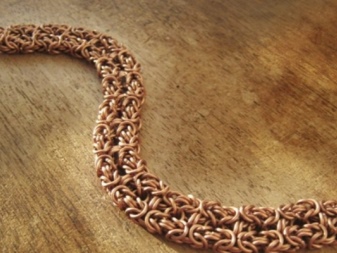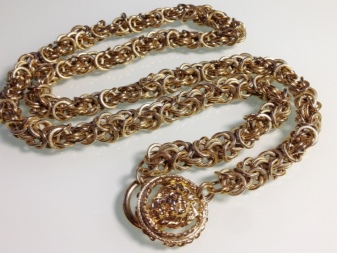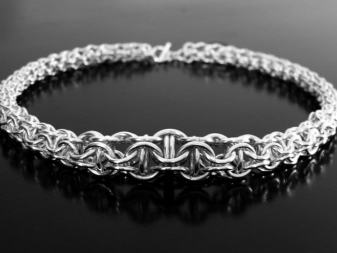Byzantine chain weaving

The necklace is a versatile piece that never goes out of fashion. They can be both female, and man's, from precious metals, from various alloys, massive and thin, and also the most different weaving. Young girls usually choose light, elegant products with pendants and pendants. Older women tend to have heavier jewelery, while men prefer thick chains of gold or silver.
A bit of history
There are several dozen different types of jewelry weaving - anchor, Bismarck, rollo, armor-clad, cardinal and others. Many of them appeared in the first millennium AD as various ways of weaving knight's mail, including Byzantine, also called fox tail or royal mating (royal weaving).
Chain mail, woven in this way, was quite thick and very strong, for which the method gained great popularity. In Russia, he appeared after the adoption of Christianity. Gradually, this method was adopted by jewelers for the manufacture of beautiful and durable jewelry.
In addition, the intricate ornaments used to decorate the pages of books were called Byzantine weaving. These ornaments were also very similar to the modern version of jewelry.
Features
Products made in the technique of Byzantine weaving look solid and personable. Despite the massiveness and bulk, they do not seem fanciful and too heavy. They are distinguished by durability, strength and noble beauty. Due to the complex fantasy weaving, the chains beautifully and unusually shimmer in the light.
In one product gold, silver and platinum fragments can be combined, which makes its appearance even more intricate and interesting. Also, this weaving is applicable for the manufacture of jewelry made of steel.
Manufacturing technology
Byzantine chain weaving is one of the most difficult. It is created by successively connecting elements of the same size. Links can be of various shapes - square, oval or round, their thickness determines the thickness of the future product.
The process of creating painstaking and very complex. It is carried out with the help of a special tool - bent pliers with no cuts, takes a lot of time from a jeweler and requires attentiveness and experience. Such work is rarely immediately obtained without preparation.
This method of weaving allows you to create both long chains and massive bracelets and even small charms.
Cost of
Products of Byzantine weaving are very expensive, due to their thickness and complexity of manufacture. Depending on the length and weight of the finished chain of 585 sample gold, the price may start from 12,500 rubles. and end around 60,000 rubles. 925 silver jewelery tests cost from 3,500-4,000 rubles, and steel jewelery - from 2,500 to 4,000 rubles.
More budget will come if you order the product from the master. When executing an individual order, jewelers usually calculate the cost - from 450 rubles. for 1 gram of work with gold and from 350 rubles. for 1 gram of work with silver.
What to wear?
Ornaments made using the technique of Byzantine weaving are more suitable for men and women after 40 years. They will be appropriate to look like in addition to the weekend wear, worn on a solemn occasion. These chains and bracelets look very solid, concise and self-sufficient, so you should not complement them with other ornaments and decorative elements.
The most common type of product is the Byzantium chain, made of gold. In addition to the costume in a solemn business style, she will emphasize the status and good taste of her owner.In the silver version, this adornment is more suitable for an appearance - a concert or a theater.
A young girl can also afford such a product, but only if she puts it on for the evening solemn dress. An excellent reason to “walk” the Byzantine chain is if you are invited to a wedding ceremony.
A two-color chain or a bracelet made of steel with gold is a great gift for a man. At the same time, the steel ornament looks no less impressive than that of precious metal. Men of all ages can wear them, but representatives of the stronger sex after 35 years usually prefer.



